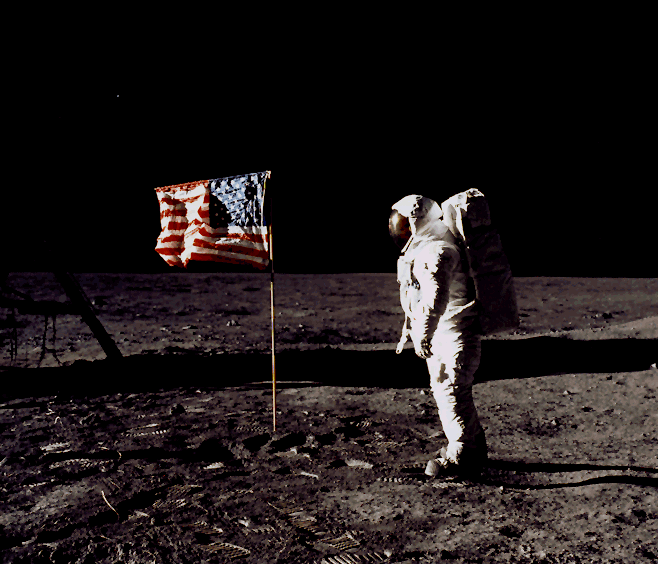Next Moon Landings Will Go Much Further Than Apollo, NASA Chief Tells Senate

Humans set foot on the moon less than seven years after President John F. Kennedy's famous speech establishing a lunar landing as a national goal — so why is NASA going to wait 11 years until the next visit?
That was one question posed to NASA Administrator Jim Bridenstine during a Senate subcommittee hearing yesterday (Sept. 26) about the agency's role in the global space race. The hearing came on the eve of NASA's 60th anniversary.
"Senator, just so you know, that's the first question I asked when I showed up — 'Why is it taking so long?'" Bridenstine told Sen. Ted Cruz, chair of the subcommittee, when he asked why the longer timeline. But the administrator said he understands the reason for the delay now and that the answer isn't that NASA is lazy. Instead, it all boils down to two factors: scope and funding. [Building Apollo: Photos from Moonshot History]
First, the administrator defended the 11-year timeline by arguing that the new mission's goals and context are dramatically different than those of the Apollo era. NASA is trying to do a whole lot more this time around than it did in the 1960s, Bridenstine explained. "I don't even like to use the word return — to go forward to the moon, sustainably," Bridenstine said.
"What we're doing now is entirely different than what we did back then," Bridenstine continued. The Apollo missions carried 12 humans to the moon, but that was pretty much it, he said. "And then we came home, and we haven't been back since," he said.
NASA's modern plan, in contrast, relies on building the infrastructure necessary to make repeated visits — robotic and human alike — to the moon relatively easy. That means building a so-called gateway, a small space station in a highly elliptical, six-day orbit around Earth that gives the gateway easy access to the moon.
That much heftier plan derives in part from the motivations driving the return to the moon, which have become more amorphous after the Cold War. "Back then, it was a space race. We were trying to defeat the Soviet Union by getting there first, proving our technological superiority, proving our economic and political superiority in conjunction with that space race victory," Bridenstine said. Yet, since the fall of the Berlin Wall, presidents have hawked moon missions for three decades with no measurable success
Get the Space.com Newsletter
Breaking space news, the latest updates on rocket launches, skywatching events and more!
And, of course, the administrator pointed to the agency's budget, arguing that during the Apollo era, NASA received the equivalent of $50 billion in modern currency each year. Now, he's working with a $21 billion budget across the agency.
"How is it that we're not able to do more than we were able to do in the 1960s?" Bridenstine said, quoting a question people commonly ask him. "The answer is, we're doing a lot more than we ever did in the 1960s, and we're doing it with a budget that's just a lot smaller."
The hearing, as a whole, roamed broadly across NASA's priorities. Bridenstine squashed rumors that the International Space Station would be destroyed in 2024 (NASA intends to transition the station to commercial ownership instead), mentioned the agency's interest in exploring revenue streams from charging for its logo or commercial research conducted on the space station, and noted the potential for turning lunar ice into rocket fuel.
Email Meghan Bartels at mbartels@space.com or follow her @meghanbartels. Follow us @Spacedotcom, Facebook and Google+. Original article on Space.com.
Join our Space Forums to keep talking space on the latest missions, night sky and more! And if you have a news tip, correction or comment, let us know at: community@space.com.

Meghan is a senior writer at Space.com and has more than five years' experience as a science journalist based in New York City. She joined Space.com in July 2018, with previous writing published in outlets including Newsweek and Audubon. Meghan earned an MA in science journalism from New York University and a BA in classics from Georgetown University, and in her free time she enjoys reading and visiting museums. Follow her on Twitter at @meghanbartels.









